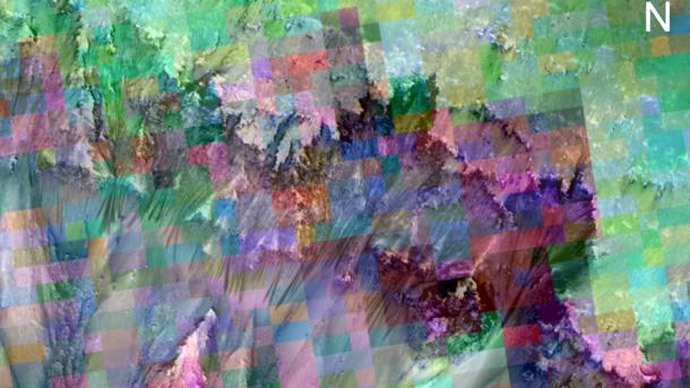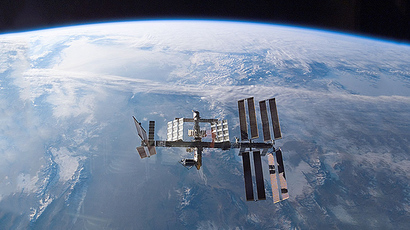Is water flowing on Mars? NASA presents new evidence

Researchers have unveiled new evidence which they say proves water could be flowing on Mars right now – a claim that could debunk the long-held belief that the Red Planet has been completely dry for billions of years.
Lujendra Ojha and a number of his fellow academics at the Georgia Institute of Technology have proposed that the dark, finger-shaped features on Martian slopes which disappear and reappear as seasons change are in fact flows of saltwater. The dark lines are officially known as recurring slope lineae (RSL), and NASA has previously confirmed that the markings are most visible when temperatures rise.
Ojha, a graduate student, published the details on 13 RSL sites in the journal Geophysical Research Letters. The images he examined were captured by the HiRISE camera on NASA’s Mars Reconnaissance Orbiter.
“We still don’t have a smoking gun for existence of water in RSL, although we’re not sure how this process would take place without water,” Ojha said in a statement issued by NASA. “In HiRISE images, we see them forming, elongating and then fading over time. That’s why they’re called seasonal – they form and flow when the temperature is right.”
What the images do confirm is that iron-containing minerals were found on the slopes where water is suspected. Other slopes, where the dark finger-shapes were not found, do not contain iron minerals.
“Just like the RSL themselves, the strength of the spectral signatures varies according to the seasons,” Ojha explained. “They’re stronger when it’s warmer and less significant when it’s colder.”
Ojha first spotted the strange images in 2011, when he was an undergraduate student at the University of Arizona Tucson. At the time, he described the potential discovery as a mere stroke of good fortune, although he could not have predicted that the seemingly minor discovery would send scientists across the country on a hunt to prove something more.
“When I first saw them, I had no idea what it was. I just thought it was a streak made by dust or something similar,” Ojha told CNN in 2011. “It was a lucky accident.”
Alfred McEwen, one of the researchers who examined the evidence last year, said the results have been surprising.
“Water should be rapidly evaporating, so it’s difficult to explain long flows unless it’s sufficiently salty water,” he said. “So far, there aren’t any good dry hypotheses. There are some possibilities, and we keep them open as working hypotheses, but no one has been able to come up with a detailed model that makes sense.”
The scientists admitted that more work needs to be done, in part because roving dust swarms on Mars could taint the quality of the images being studied. Yet they also said if there is water on the Red Planet, it would be salty and close to the surface. Still, the confirmed existence of water would greatly increase NASA’s knowledge of Mars’ climate and make it more likely that life, however insignificant, could exist there.
“The flow of water, even briny water, anywhere on Mars today would be a major discovery, impacting our understanding of present climate change on Mars and possibly indicating potential habitats for life near the surface on modern Mars,” Richard Zurek, a Mars Reconnaissance Orbiter Project scientist, said in the NASA press release.













